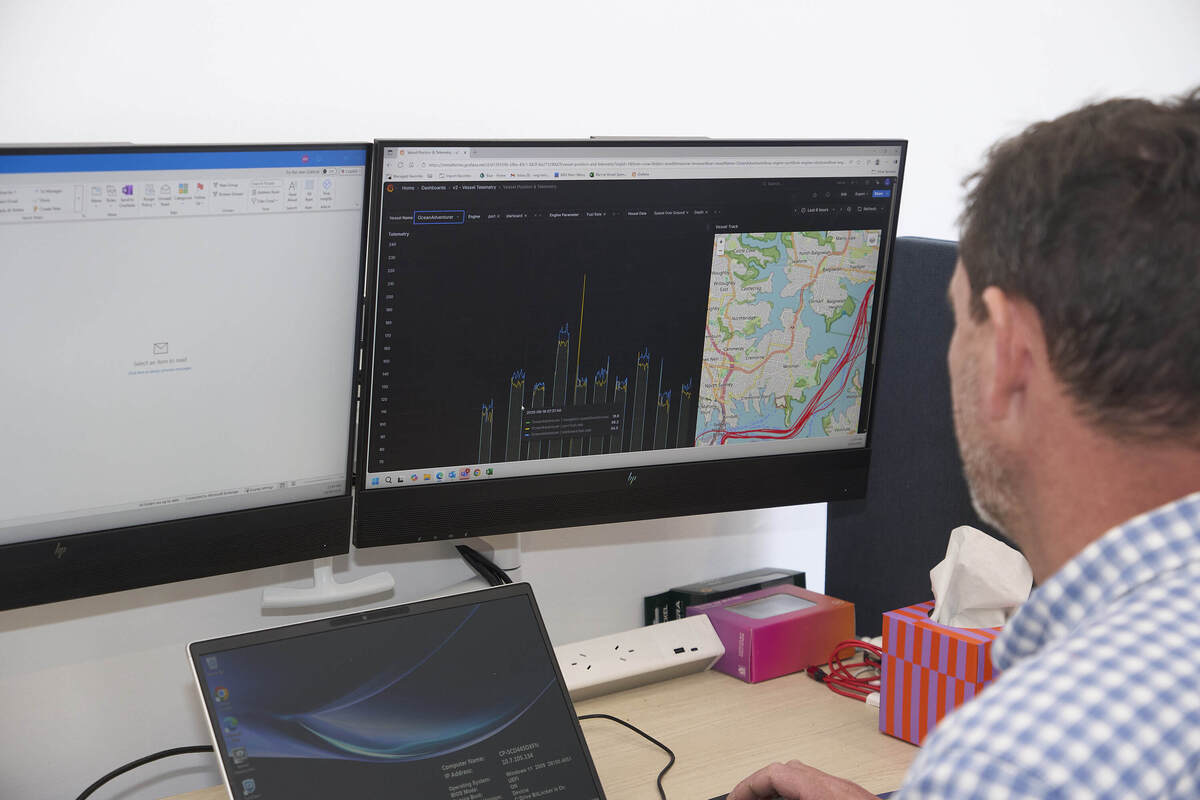
The answers are in the data: How NRMA Marine uses On Watch to optimise fleet assets
NRMA Marine is a subdivision of the NRMA Group. The member-owned company owns and operates several marine transport, cruise and tourism fleets. These currently include the Manly Fast Ferry, Palm Beach Ferries, and Fantasea Cruising in Sydney Harbour and beyond, Gordon River Cruises in the Tasmanian wilderness, and Coral Expeditions in Queensland.
The various passenger ferry and cruise operations in Sydney operate services for the NSW State Government’s Transport for NSW (TfNSW). These fleets deliver to TfNSW KPIs, primarily focused on service reliability and commercial and sustainability targets for NRMA Group.
We spoke to Adam Moore, Senior Asset Manager at NRMA Marine, about his role in the company and the challenges he faces in maximising fleet performance and delivering the many competing KPIs for the marine operation.
Adam’s role encompasses all aspects of asset performance, from schedule reliability to asset utilisation, operating cost management and sustainability.
Why use the On Watch VMS?
We asked Adam why NRMA Marine adopted On Watch as a Vessel Monitoring System (VMS).
“On Watch has helped us transform the granularity with which we monitor every vessel within our fleets. First and foremost, On Watch provides visibility of a vast range of vessel sensor data. This includes data across fuel, engine, exhaust, steering, throttle and GPS position. If it makes sense to measure something, we will”.
“The system provides the first layers of measurement that we analyse to gain insight, develop improvement ideas and make management decisions. Then, when a change is made, the data allows us to validate the outcome”.
What improvements have been realised?
“Fuel saving is one of many areas we’ve improved since using the data we collect and analyse with On Watch. To date, we’ve realised a 13% saving in fuel use. That’s a significant reduction in cost and CO2”.
“A good example of how fuel saving has been achieved is a change in the way we deal with hull cleaning. A slippery hull significantly improves optimum cruising speed and fuel consumption. As all fleet and maintenance managers know, the traditional way is to get the boat into a dry dock on a pre-determined schedule. This takes the vessel out of service, is expensive and uses anti-foul, a toxic substance”.
“So, we asked ourselves what we could do about this and how to prove the benefits. The plan was to change to robotic hull cleaning and completely discontinue antifouling - a big call. We used On Watch data to validate the results, which showed a series of wins across vessel uptime, fuel use, and cost efficiency. It’s all there in the data, plus the real but intangible environmental benefit”.
“We use On Watch to identify trends and prove outcomes. This has helped us optimise maintenance scheduling, see problems before an alarm sounds, and avoid the big costs that can accumulate”.
“We’ve learnt how interconnected data can point to impending problems within specific vessel configurations. For example, we’ve found that a slight rise in gearbox temperature points to an air intake issue. Again, because we can identify this early, it’s easy to fix, less costly, and can be completed with little or no change to the vessel’s run schedule and utilisation”.

What does the future hold?
“My role has ambitious KPIs attached to it, and the expectations of our business and contract owners will continually change. Our approach is to keep looking - to keep searching for incremental changes that increase reliability, lower cost, and improve fleet sustainability”.
“We aim to get more granular with our understanding of trim and even consider testing longitudinal trim control to lessen steering input and drag at speed”.
“We’re excited about the changes we’ve seen in On Watch 2.0 that will improve reporting and the potential for automation”.
“We also expect that our corporate social responsibility targets will continue to advance along with the government frameworks that mandate or incentivise sustainability performance. It all relies on data”.
The bottom line?
“The richness of the data, combined with the clarity of reporting, is helping us discover new opportunities all the time. Every answer unlocks more questions. It’s a virtuous cycle of improvement that we will never stop pursuing”.
“Another aspect of On Watch that I want to highlight is the level of support and collaboration we enjoy. Like all our best suppliers, On Watch helps our team do our jobs better. They’re an important part of our performance, and we greatly value that”.
“The bottom line is we achieve high levels of reliability at a lower cost. And that’s exactly what we need to do”.


